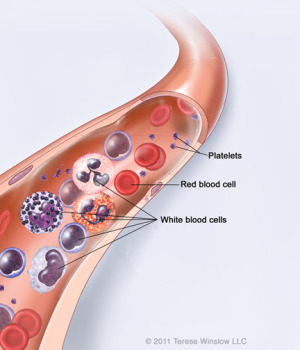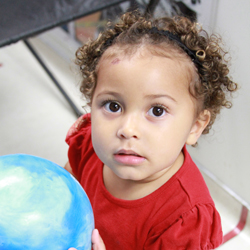About Acute Lymphoblastic Leukemia (ALL)
Acute lymphoblastic leukemia (also called acute lymphocytic leukemia, or ALL) in children is cancer of the blood that starts in the bone marrow and spreads to the bloodstream. Leukemia starts in the bone marrow, the spongy internal part of bones where new blood is made. The term leukemia comes from Greek words for white and blood, because ALL affects white blood cells.
Leukemia develops because of a mutation in a white blood cell that causes it to multiply uncontrollably. These mutated white blood cells, called “blasts” take over the bone marrow and crowd out normal blood cells. One blast soon generates billions of other blasts, with a total of about a trillion leukemia cells typically present in the body at the time of diagnosis.
ALL is the most common children’s cancer, accounting for 25% of all cancers in children under the age of 15. There are over 3,000 new cases of ALL diagnosed in children and adolescents (0-19 years old) in the United States each year.
 Signs and Symptoms of Acute Lymphoblastic Leukemia
Signs and Symptoms of Acute Lymphoblastic Leukemia
Leukemia cells “crowd out” normal blood cells. The decrease in normal cells causes the symptoms of leukemia, which may include:
- Fatigue and being pale results from a decreased number of red blood cells, known as anemia
- Fever due to the disease itself or from infection because there are a decreased number of healthy white blood cells, known as neutropenia
- Bruising or bleeding from decreased platelets, known as thrombocytopenia
- Bone pain, sometimes associated with swelling of the joints
- Weight loss or loss of appetite
- Enlarged lymph nodes
The signs and symptoms of ALL can be the same as more common children’s illnesses and some children are treated for those other illnesses before leukemia is diagnosed. Most children with ALL have symptoms for a few weeks to several months before a cancer diagnosis is made. The amount of time between the onset of symptoms and the cancer diagnosis does not change the chances for cure.
CureSearch Research
We’re driving high-potential research to make a difference. Learn more about active CureSearch research projects addressing ALL.



